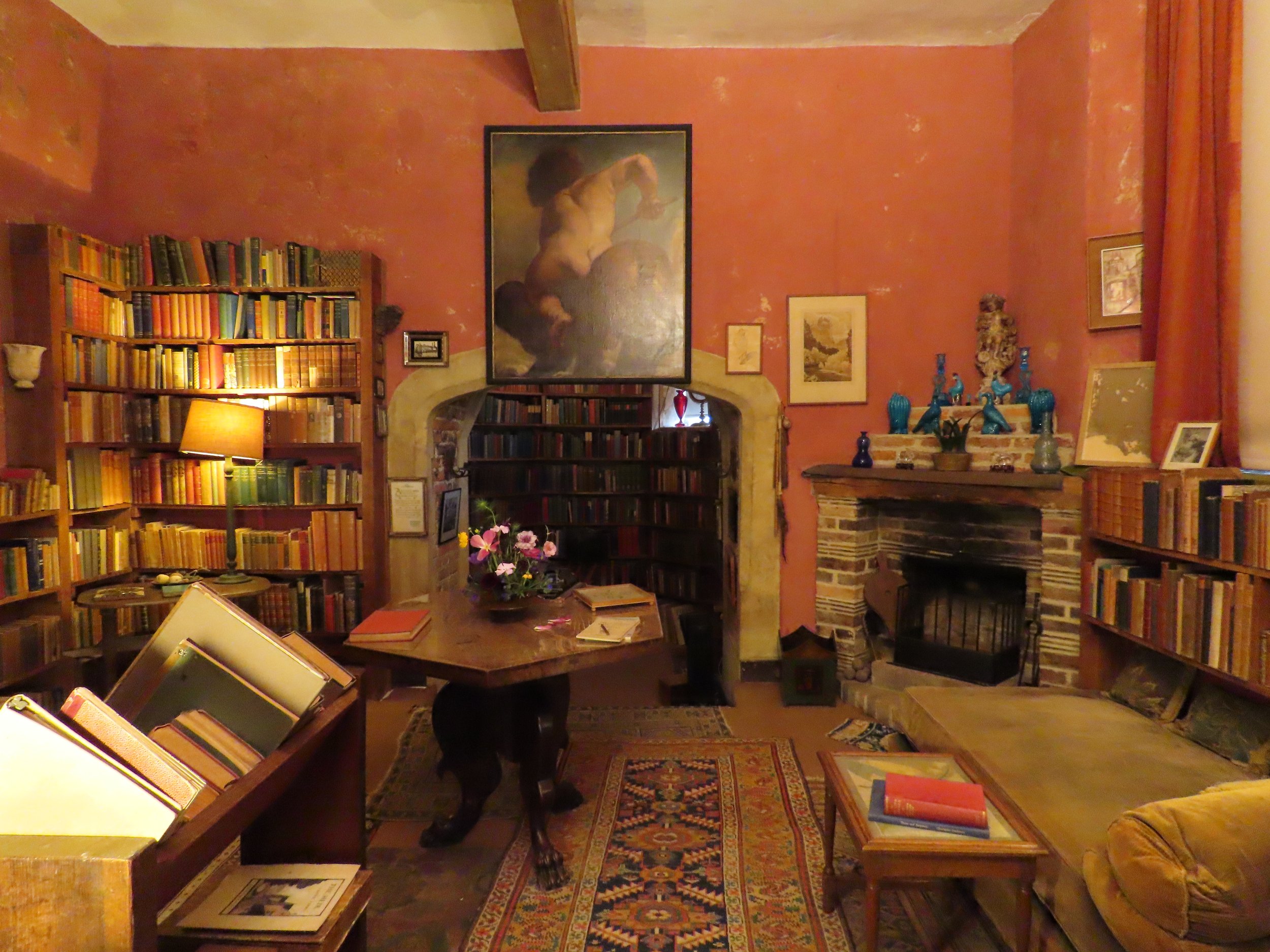Sissinghurst: One Woman, Three Houses, and the Garden That Became Her Legacy
Sissinghurst is a garden set within an ancient ruin, surrounded by a working farm. If the spaces we create reflect our inner worlds, then to begin to understand this place, we must first know Vita Sackville-West; and to understand Vita, we must first know Knole.
Knole has been the ancestral home of the Sackville-West family since the mid-15th century. It is one of the largest homes in England, with the structure itself spanning four acres within a 6,000-acre estate in Kent. A former archbishop’s palace, Queen Elizabeth I gifted the estate to her cousin, Thomas Sackville. There, his descendants have lived for fourteen generations.
The house is brimming with Old Masters and Stuart-era antiquities. Leopards, a symbol of status and power from the Sackville family crest, adorn Knole everywhere you look. They appear on heraldic shields, as finials on the balusters, and gleaming in the stained glass (images below courtesy of the National Trust.) As historic houses go, Knole is nothing short of breathtaking.
It was here that Vita, the only child of first cousins Victoria Sackville-West and Lionel Sackville-West, spent her childhood. Vita’s mother was the illegitimate daughter of Lionel Sackville-West, 2nd Baron Sackville, and a notorious Andalusian Romani dancer named Pepita. Raised in a Parisian convent, Victoria was summoned to the United States at 19 to serve as her father’s diplomatic hostess in his role as envoy. Her beauty, broken English, and "gypsy blood" captivated Washington, D.C., where she reportedly received marriage proposals from luminaries such as Chester A. Arthur, Henry Ford, Rudyard Kipling, and Auguste Rodin. Despite this impressive roster of admirers, she chose to marry her first cousin, the 3rd Baron Sackville, also named Lionel (!) Their only child, Victoria Mary Sackville-West, was nicknamed Vita to distinguish her from her mother.
Vita’s childhood was characterized by isolation and prolific creativity. By the age of 18, she had written eight full-length novels and five plays. Knole and its antiquities were a constant source of inspiration. In one charming poem, she imagined the decorative leopards coming alive at night to roam the house, only to be petrified once more at sunrise. She performed plays in the hallways, was frequently in trouble for wrestling with the servants, and roamed the estate with the first of her many female lovers, Rosamund Grosvenor. Knole was deeply woven into the fabric of Vita’s young existence. Yet, despite her profound connection to her home, she could not inherit it; the law of primogeniture dictated that the estate pass to her uncle Charles. This exclusion was a lifelong source of bitterness; longings for Knole are reflected in her letters, diaries, and even her works of fiction.
Knole House, outside Sevenoaks in Kent. Photo courtesy of the National Trust.
Vita’s first encounter with Harold Nicolson occurred in the year 1910, at a costume ball in London. She was an 18-year-old debutante and Harold, the 23-year-old son of a diplomat, was serving as a diplomatic secretary in Madrid. Drawn to each other’s unconventional natures, Vita and Harold embarked on an 18-month courtship, during which they did not so much as kiss. Although Harold was Oxford-educated and had a respectable position, he was penniless compared to Vita’s other suitors. Her parents tacitly agreed to the union. Nonetheless, the two were wed in a small private ceremony at Knole on October 1, 1913. Vita decorated the chapel to look like a theater; her mother stayed in bed all day, avoiding the event entirely; and two of Vita’s brokenhearted lovers, Rosamund Grosevenor and Violet Trefusis, served as bridesmaids. Both Harold and Vita were openly bisexual and—perhaps emboldened by the social security their union provided—both engaged in extramarital affairs throughout their lives. Despite it all, their union had a “firm, yet elastic” nature. In Sackville-West’s words, Harold was “unalterable, perennial, and best.”
Above, from left to right: Vita, Rosamund, Violet, and Harrold.
I have yet to mention Vita’s second bridesmaid, Violet Trefusis, because attempting to explain their relationship opens a floodgate. The two met at an all girls' school in London at age 13, where they began an obsessive affair. Violet was the eldest daughter of Alice Keppel, the favored mistress of Albert, Prince of Wales, and the maternal grandmother of Camilla Parker Bowles, future mistress of the Prince of Wales turned Queen Consort (how times have changed!) Vita and Violet’s melodramatic relationship continued long after both were married, and challenged even the most imaginative fiction. At its height, Harold had to step away from the Paris Peace Conference, board a biplane, and forcibly retrieve Vita from Calais, where she and Violet had run off together, Vita having assumed the cross-dressing persona of a wounded war veteran named Julian. And we’ve barely scratched the surface.
Early in their marriage Vita and Harold lived in Constantinople, where he served as a diplomatic secretary. He maintained that post until Vita became pregnant with their first son in 1914, the same year that the British declared war on the Ottoman Empire. Upon their return to England, they took up residence in a townhouse in Belgravia and purchased Long Barn, in Kent, as a country home.
Long Barn is the garden where Vita and Harold cut their teeth, horticulturally speaking. With the help of architect Edwin Lutyens, they transformed the house and gardens during their 15 years in residence. The house dates back to the 1360s and the 3-acre formal garden showcased Harold’s penchant for order and axial lines, and Vita’s exuberant and experimental plantings. It became a gathering place for members of the Bloomsbury Group, including Virginia Woolf, who would have a profound impact on Vita’s writing and, famously, on her personal life. The two were lovers for nearly a decade, during the creative peak of both of their careers.
The garden at Long Barn, photo courtesy of Country Life.
By 1930, Vita and Harold were searching for a more private estate and found Sissinghurst, a dilapidated ruin steeped in history. Once part of Thomas Sackville’s holdings, Sissinghurst held symbolic significance for Vita, offering her a chance to reclaim her ancestral legacy. The castle itself was a shambles, having served as a naval prison during the Seven Years War; the 450 acre estate was a squalid mess of bindweed, chicken runs, and heaps of detritus left by tenant farmers. Most of the fruit trees in the orchard were dead and the only flora of interest was a variety of rose then unknown to cultivation (but forevermore known as Gallica var. Sissinghurst Castle.) Despite its state of disrepair, the estate’s rose brick Elizabethan tower captured Vita’s imagination. She and Harold cleared the land themselves with minimal help, working tirelessly for three years to prepare it for planting.
Sackville-West’s writing room, on the top floor of the Elizabethan tower.
One of the most remarkable aspects of the gardens at Sissinghurst is how quickly they were coaxed to maturity. In 1930, there was no garden. Yet, within just twenty years, Sackville-West and Nicolson transformed the space into a painterly masterpiece that appeared as though it had been there for centuries.
Early in the design process, Nicolson observed that the Tudor builders had followed no real plan: the castle walls were positioned at odd angles, the tower was not aligned with the main entrance, and the courtyard was asymmetrical. Nicolson’s design brought remarkable balance to the irregular architecture, creating a “series of intimacies”—garden rooms that feel enclosed while maintianing long vistas that make the space seem far larger than it is.




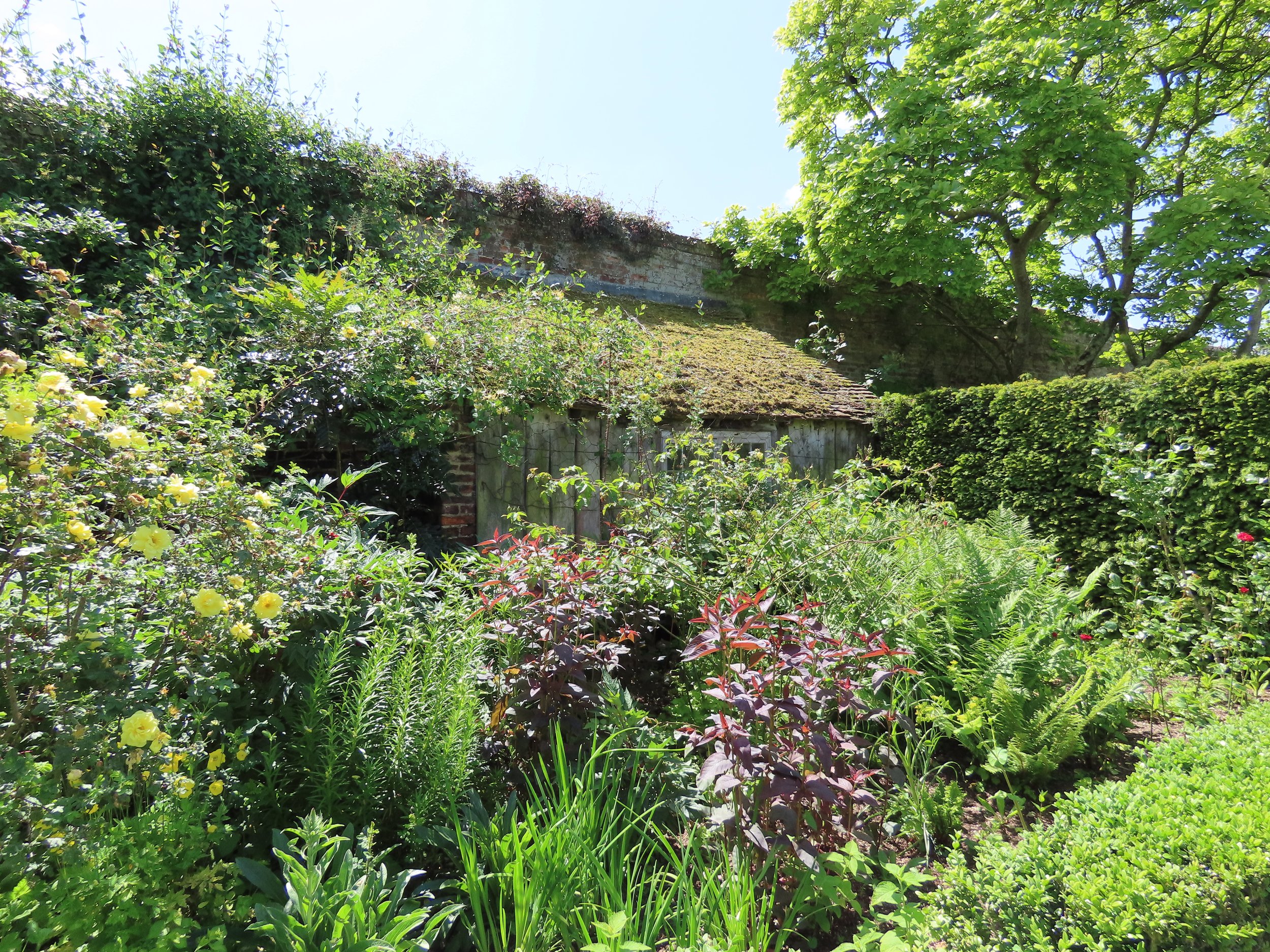


In a 1950 interview for House and Garden, Sackville-West stated, “To sum up, I think I have-succeeded in making the garden pretty with my flowers, but the real credit is due to [Harold,] who drew its lines so well and so firmly that it can still be regarded with pleasure even in the winter months when all my flowers have vanished away and the skeleton is revealed.”
Over the next thirty years, the couple accomplished an extraordinary amount of work on the property, with very little help. To fund their projects, Vita began writing a weekly gardening column for The Observer. However, progress came to a standstill during the Second World War, as the draft left the couple to manage the estate entirely on their own. And yet they persevered. “Small pleasures must correct great tragedies, therefore of gardens in the midst of war I bold tell,” wrote Sackville-West in The Garden, published in 1946. She spent most of her spare time pruning the extensive network of hedges, but the property fell into significant disrepair. Even after their head gardener returned following the war, it took them five years to clear the weeds that had overtaken the grounds.

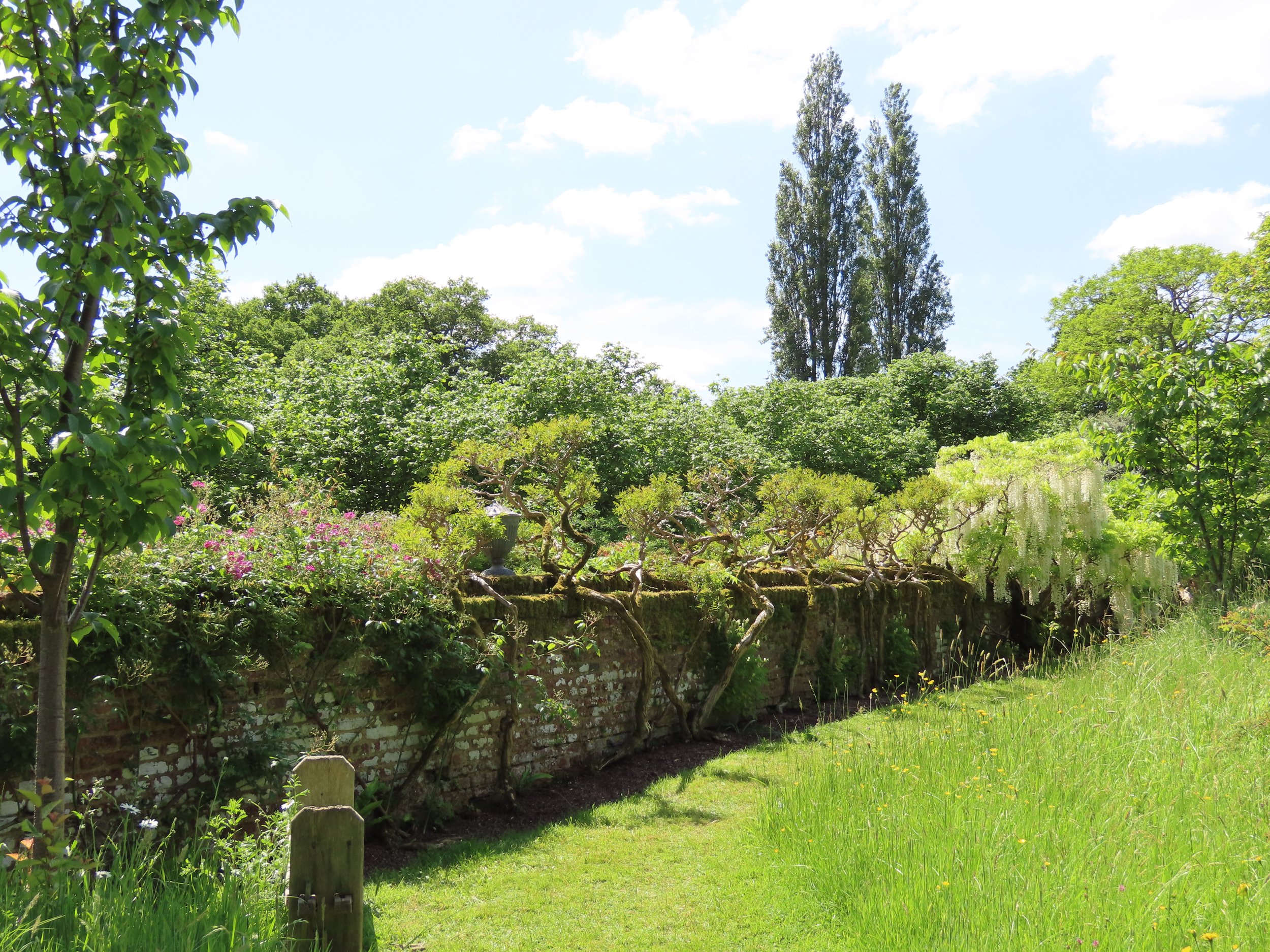

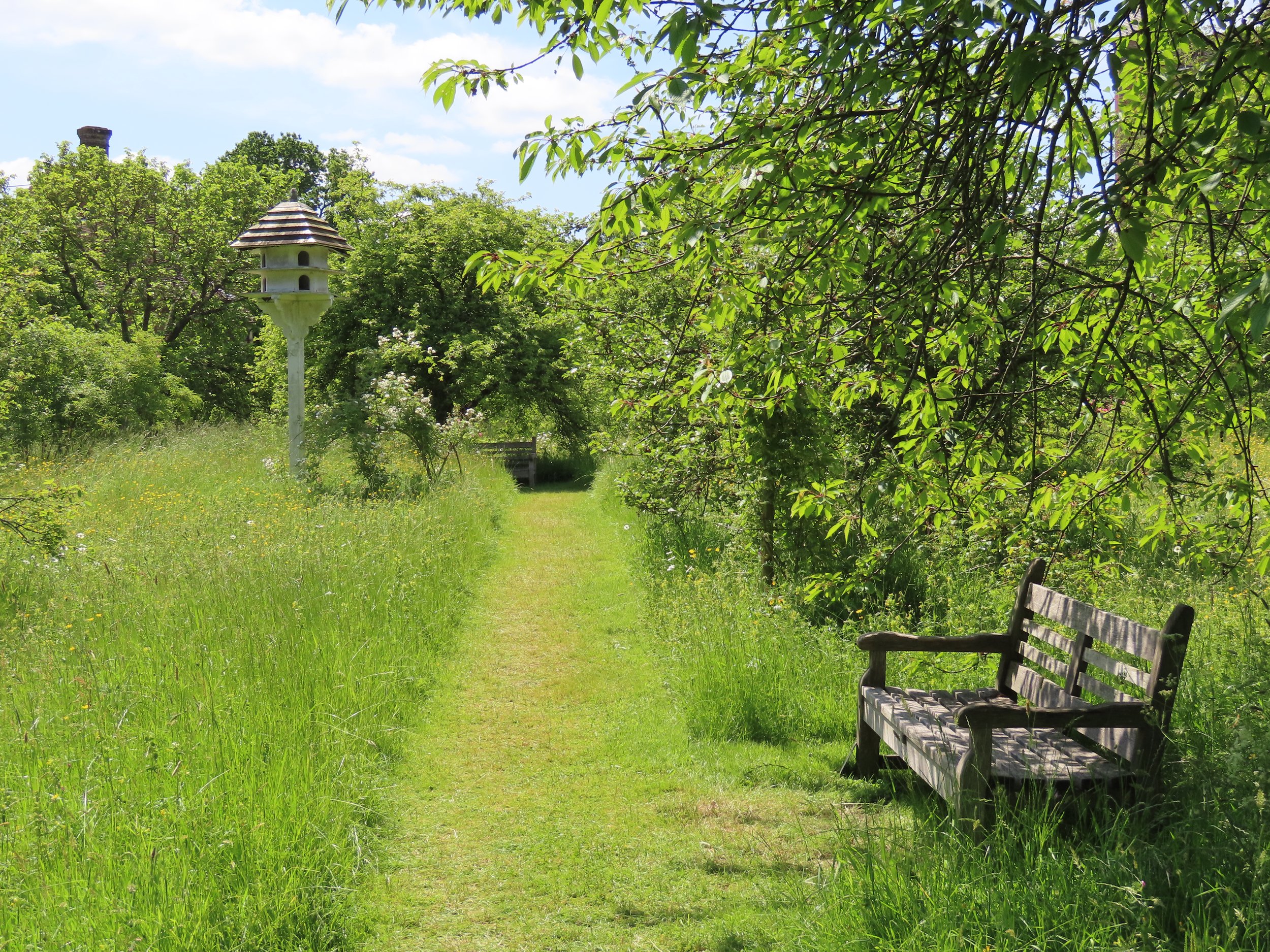
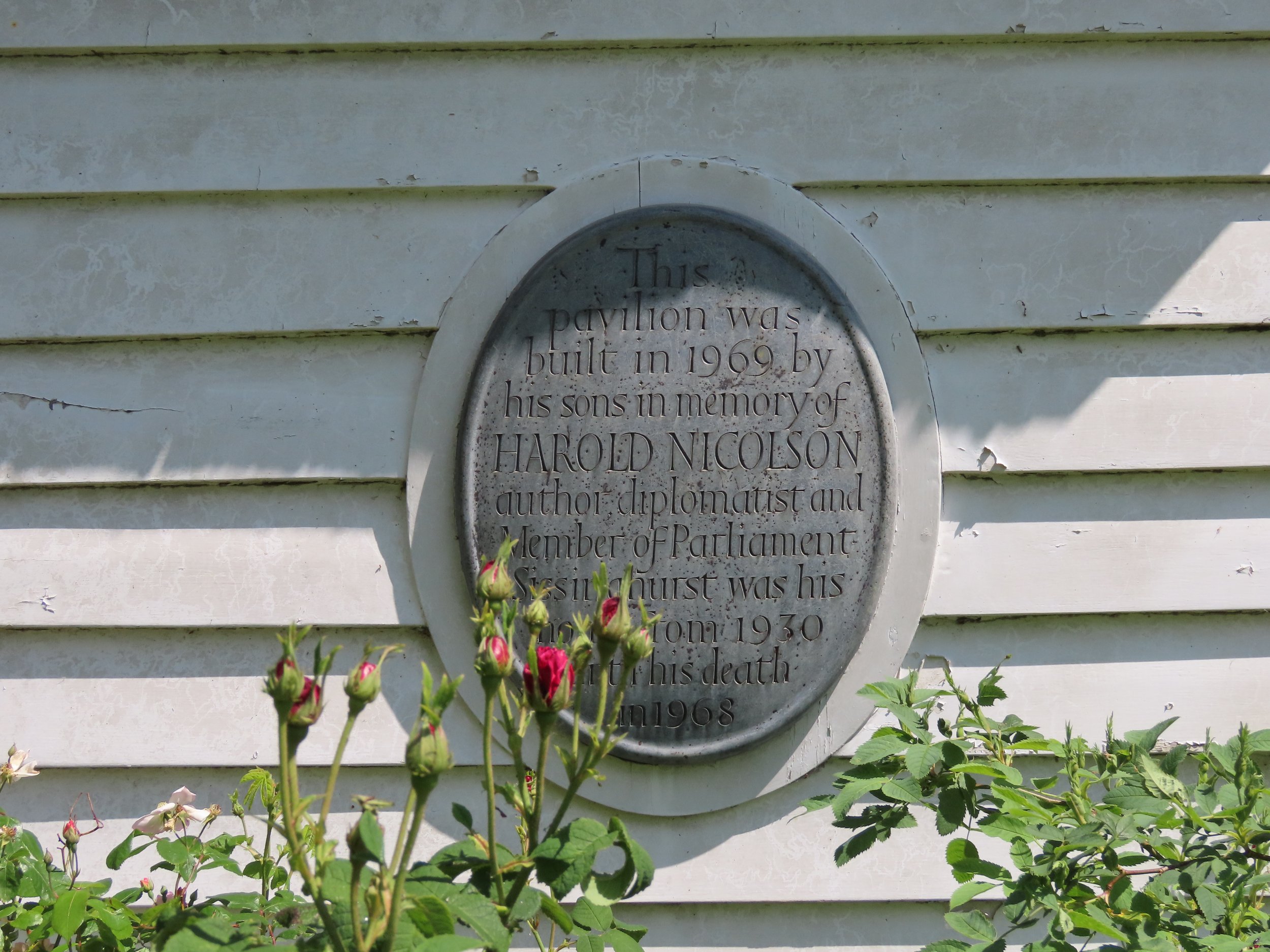


Vita and Harold’s sweat equity and creativity at Sissinghurst gave the gardens their uniquely distinctive character. It looks and feels like a garden made by two people who loved each other deeply. They approached the project with a spirit of experimentation, drawing inspiration from their extensive travels. Many of these experiments proved remarkably successful—most notably the White Garden, pictured below, which has become one of the most iconic outdoor spaces in England.

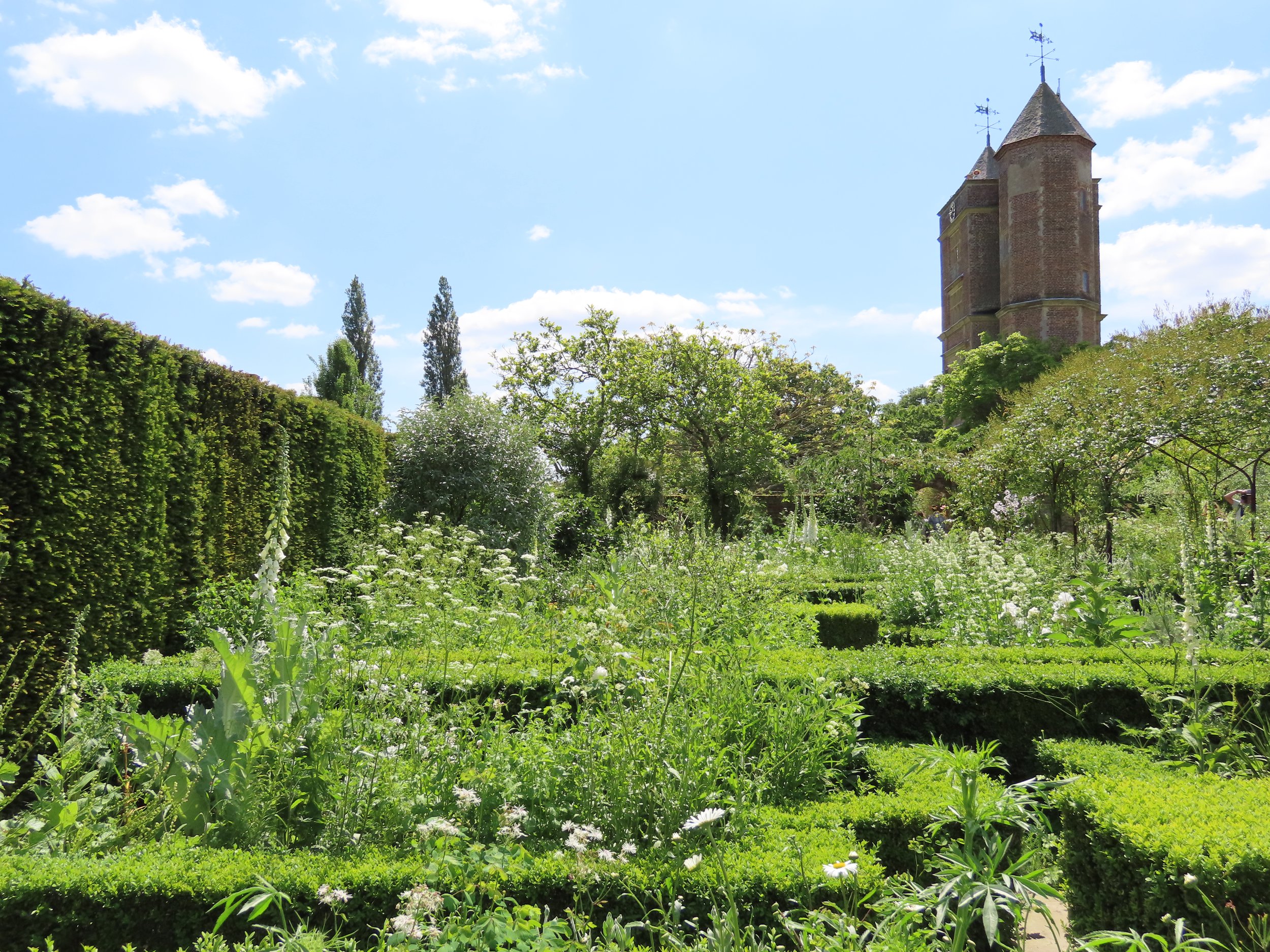
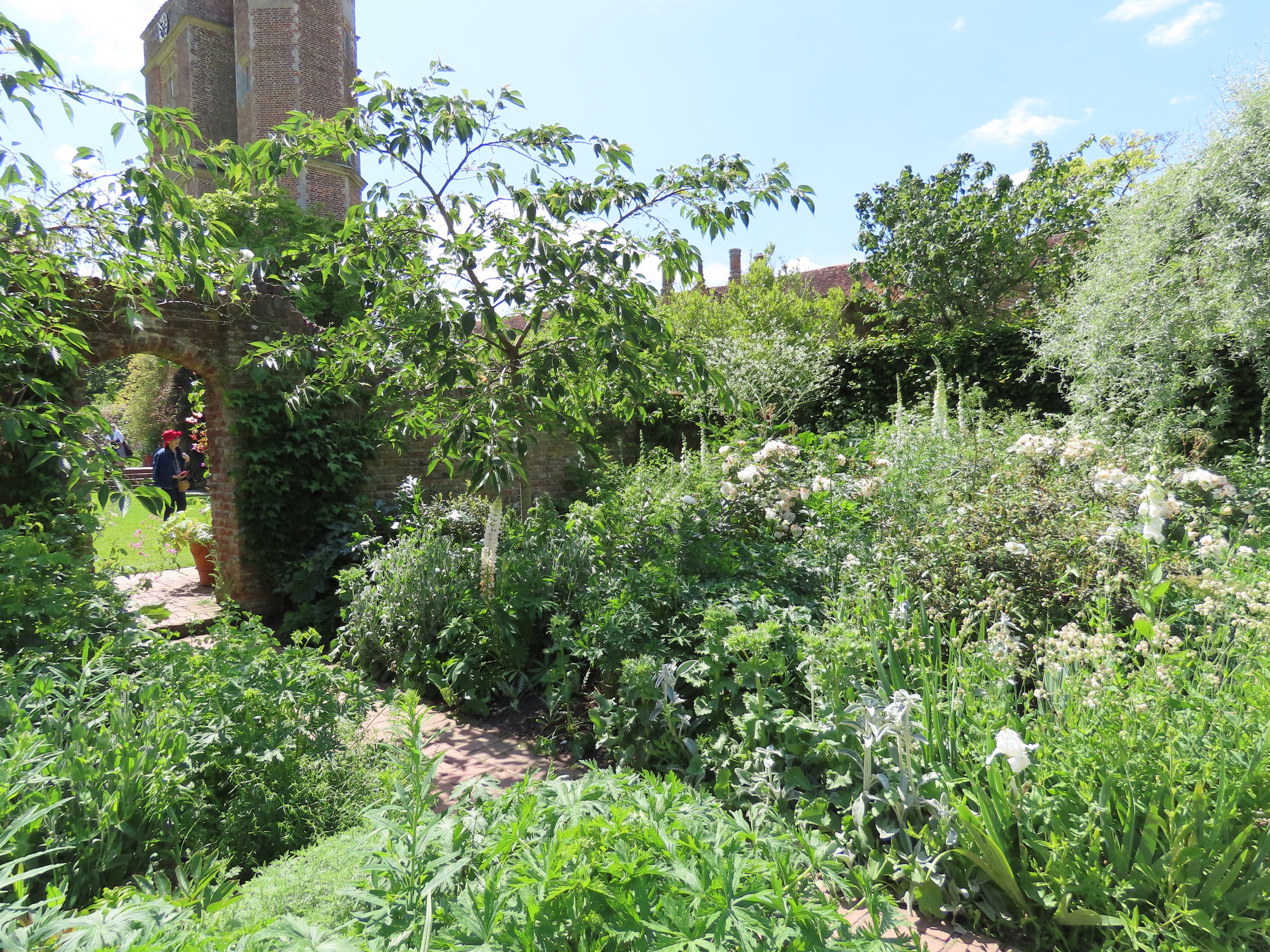
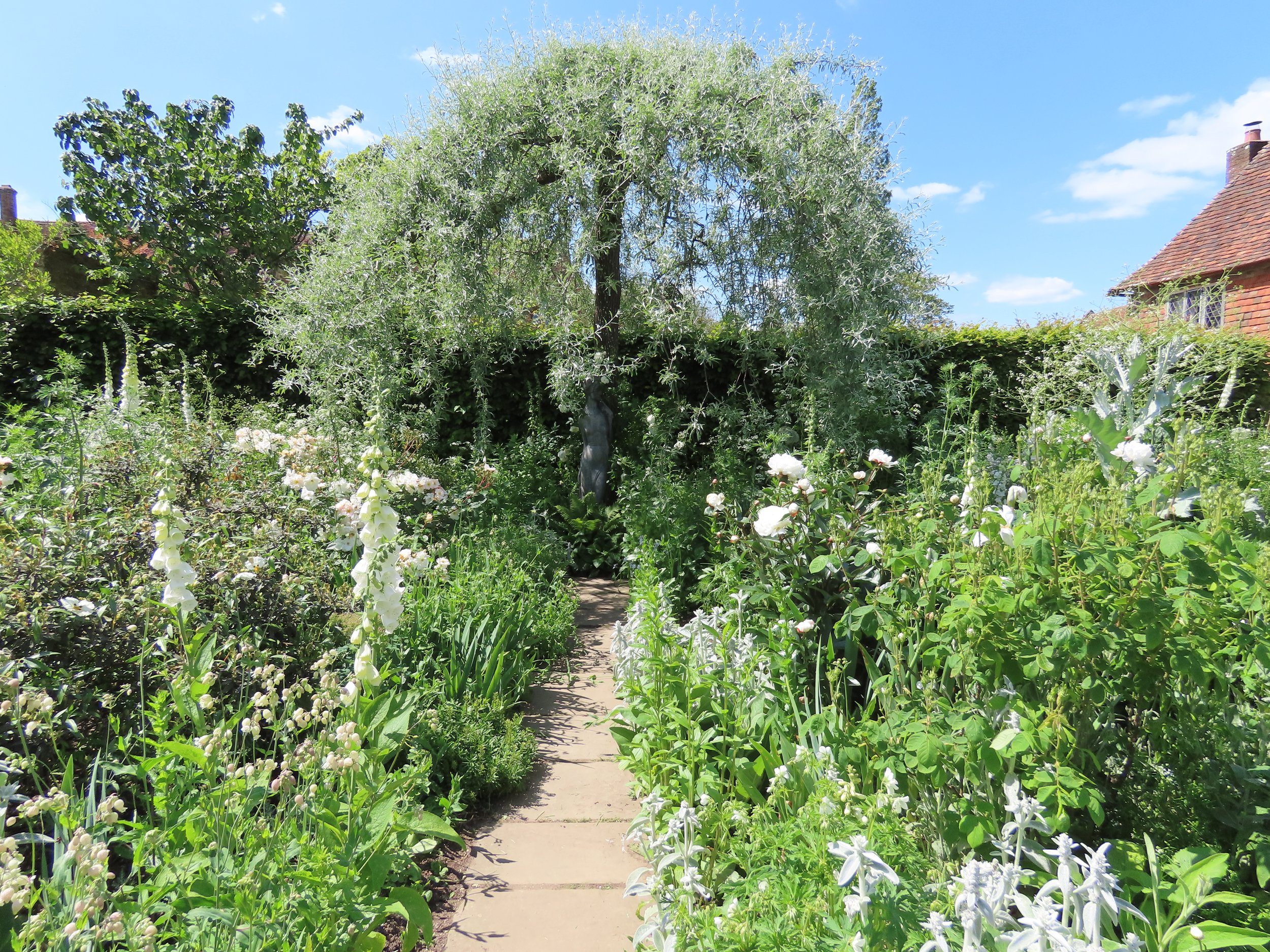
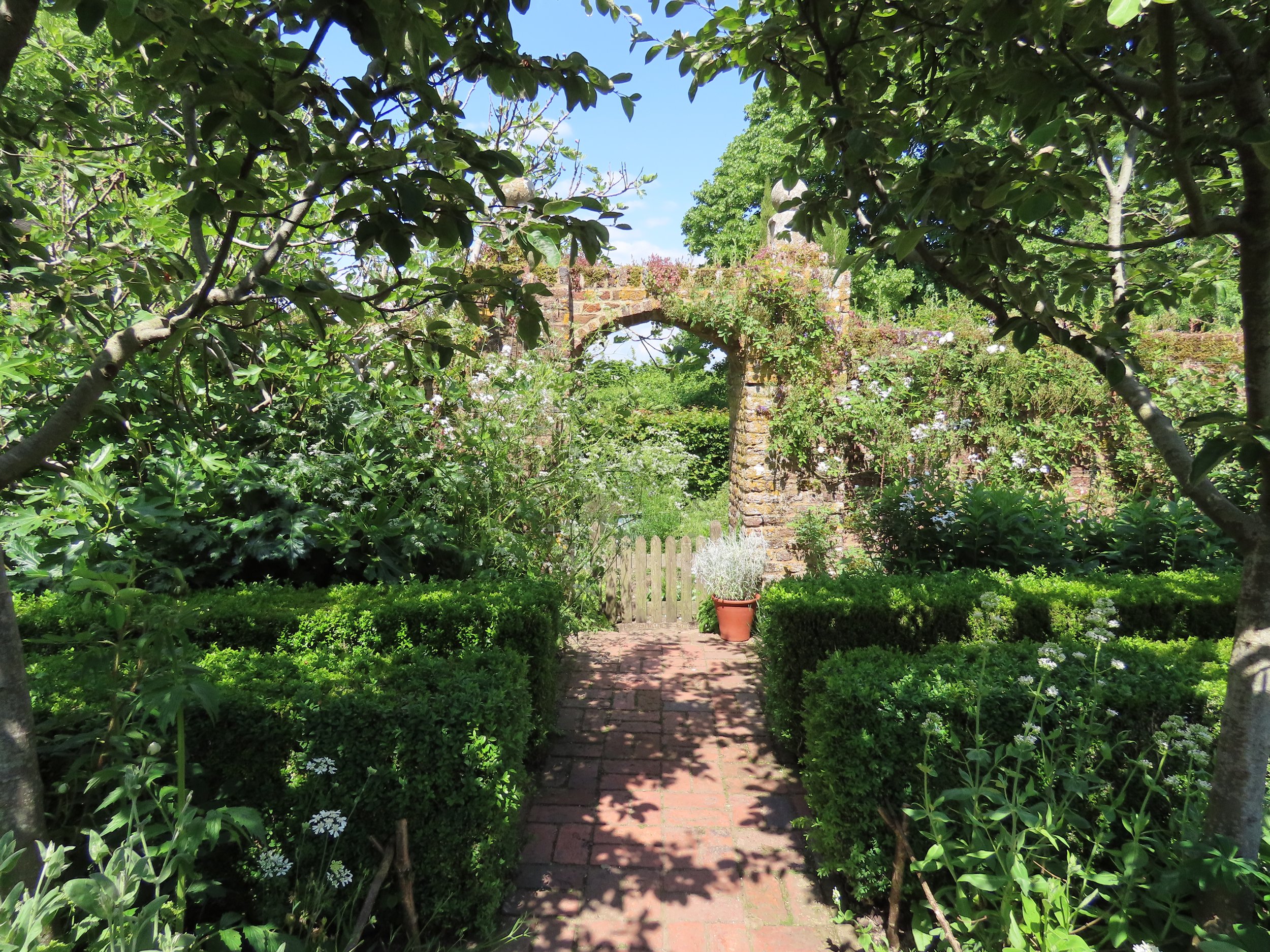
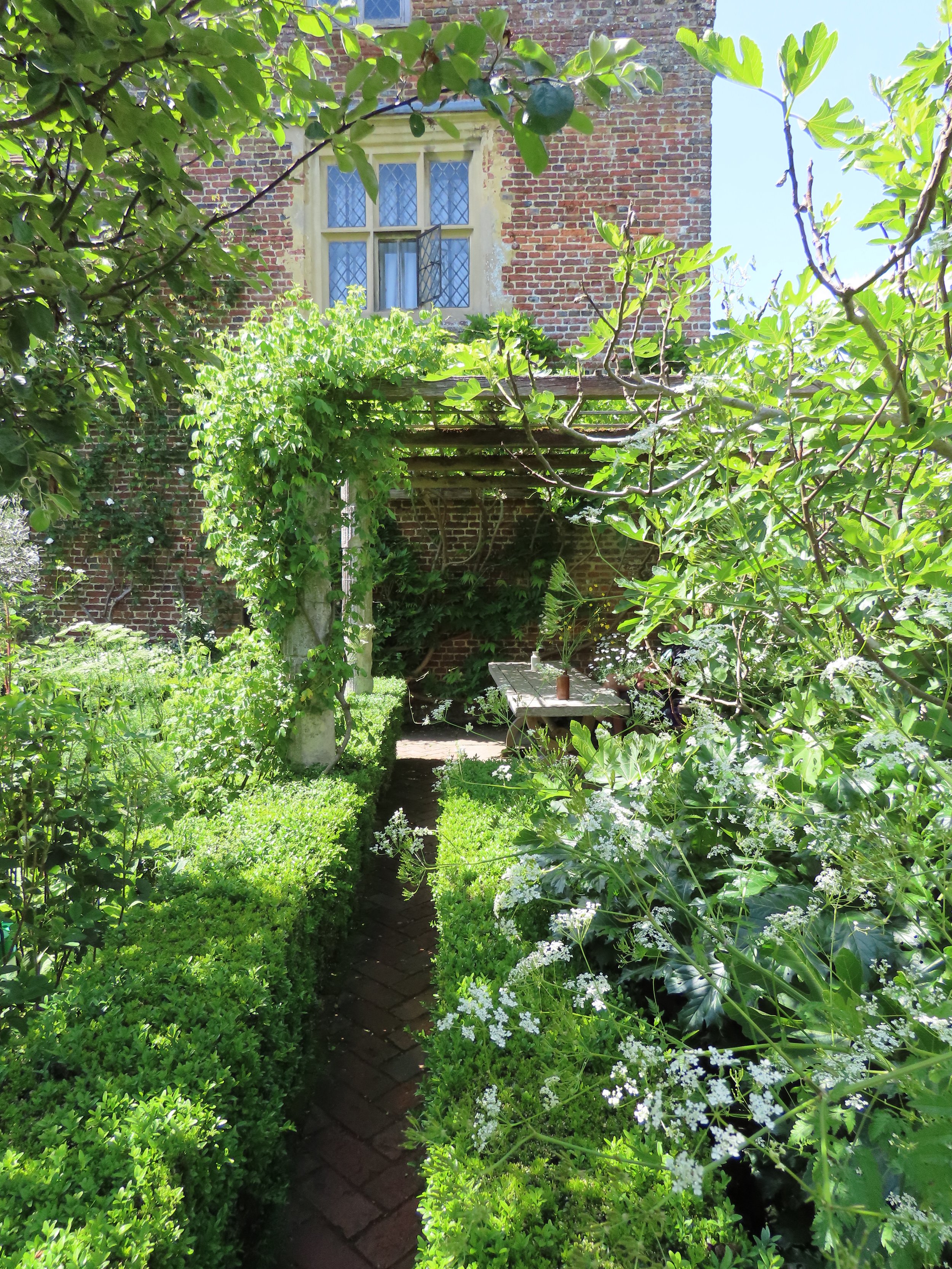
Not all of their experiments were successful, at least not initially. Inspired by a 1935 trip to the Greek island of Delos, they attempted to create a Mediterranean-style garden on the cold, north side of a wall with unsuitable Kentish clay. The planting failed, and over time, the original concept was entirely overtaken by a grove of magnolias and a carpet of scilla.
In 2018, head gardener Troy Scott-Smith and designer Dan Pearson revived the Delos Garden. Drawing from primary source documents, they curated a palette of Mediterranean plants adapted to the site. The clay was drained, the area was re-soiled, and terraces graded to slope southward, maximizing sunlight exposure. The resulting garden, pictured below, would have no doubt delighted its original designers.
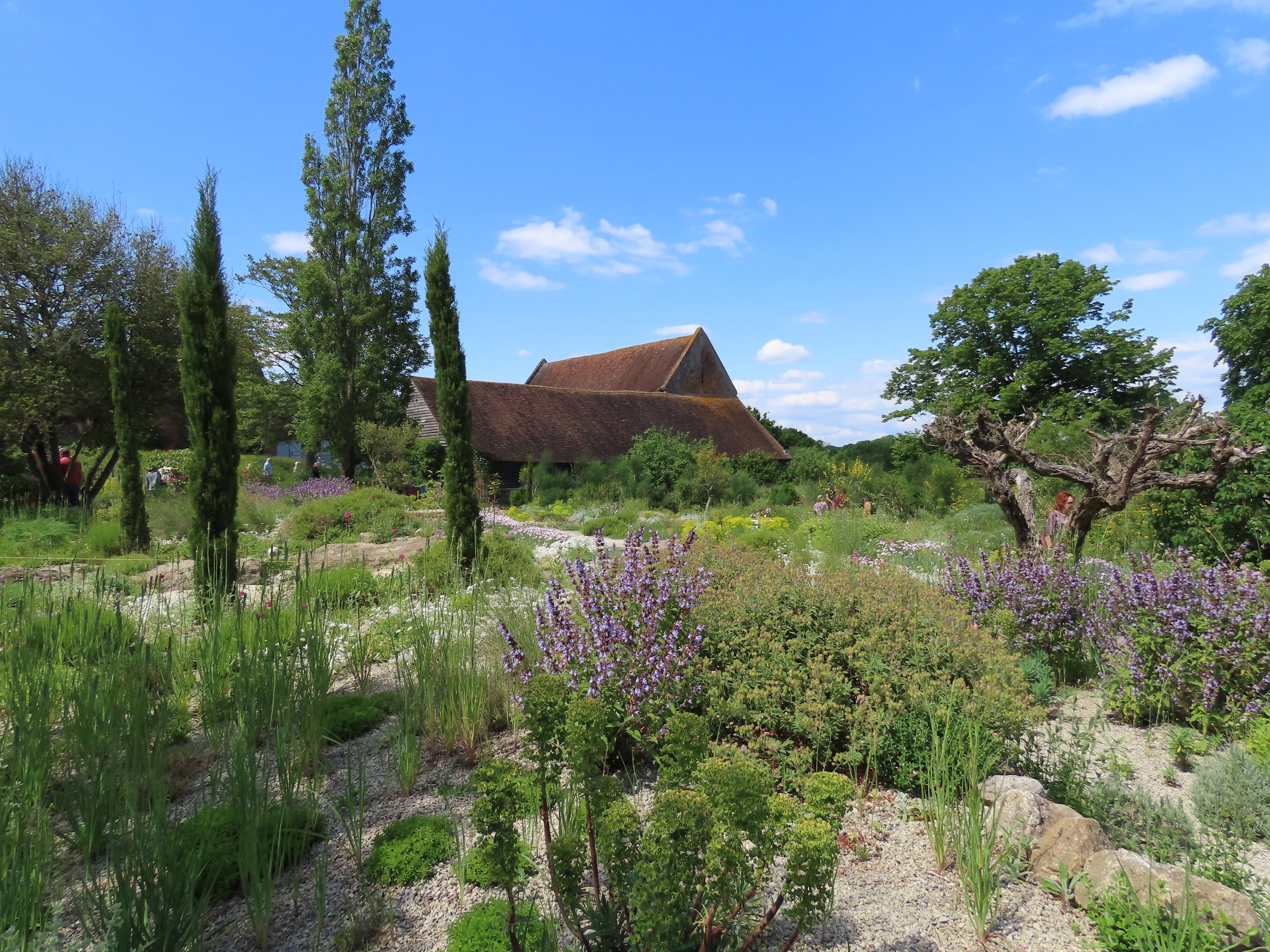

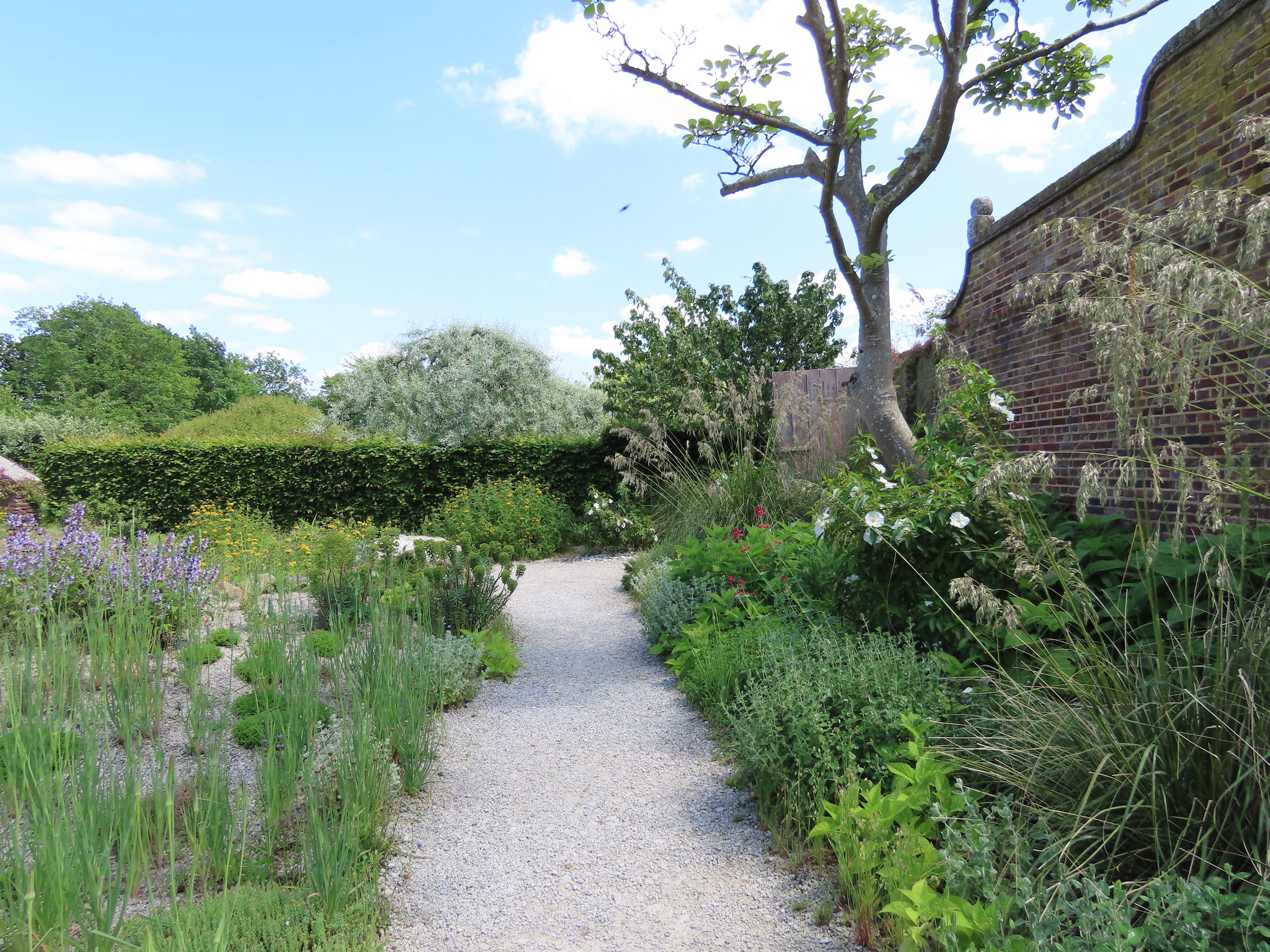


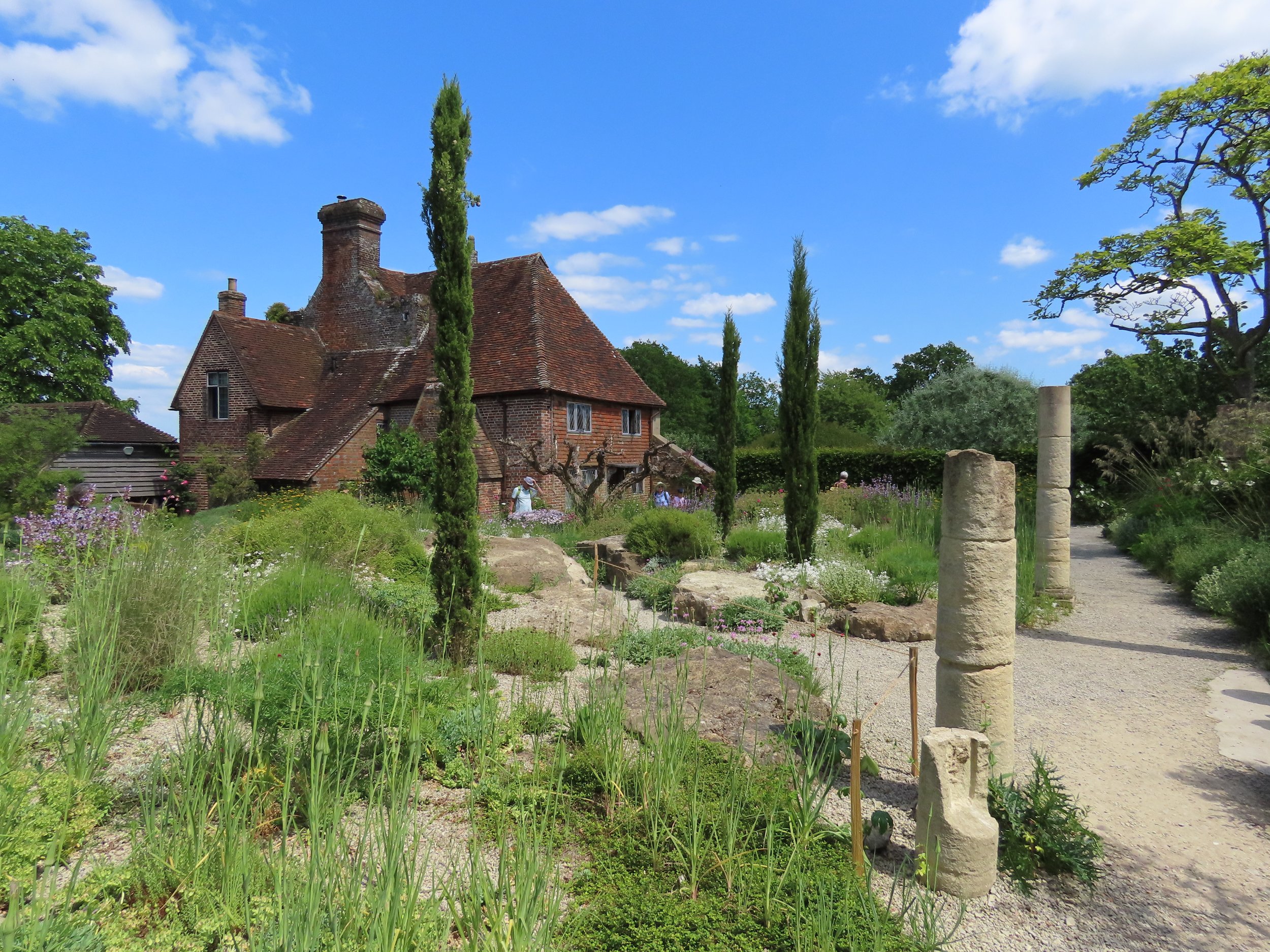
The creative partnership between Sackville-West and Nicolson endured for nearly half a century until Vita’s death in 1962. Her passing left Nicolson devastated, and he lived reclusively until he died from a heart attack six years later in Sissinghurst’s South Cottage. In 1967, the National Trust assumed stewardship of the property. Today, it is celebrated as one of the most influential landscapes of the 20th century and welcomes over 150,000 visitors annually.
Last spring, I was fortunate enough to be one such visitor. Like many before me, I was overcome by the garden’s thoughtfulness. Created by two incredibly hardworking novices, it serves as an inspiration for those of us of us who adore gardening and yet never quite feel like we know what we’re doing. As Vita famously said, “The more one gardens, the more one learns. And the more one learns the more one realizes how little one knows.”

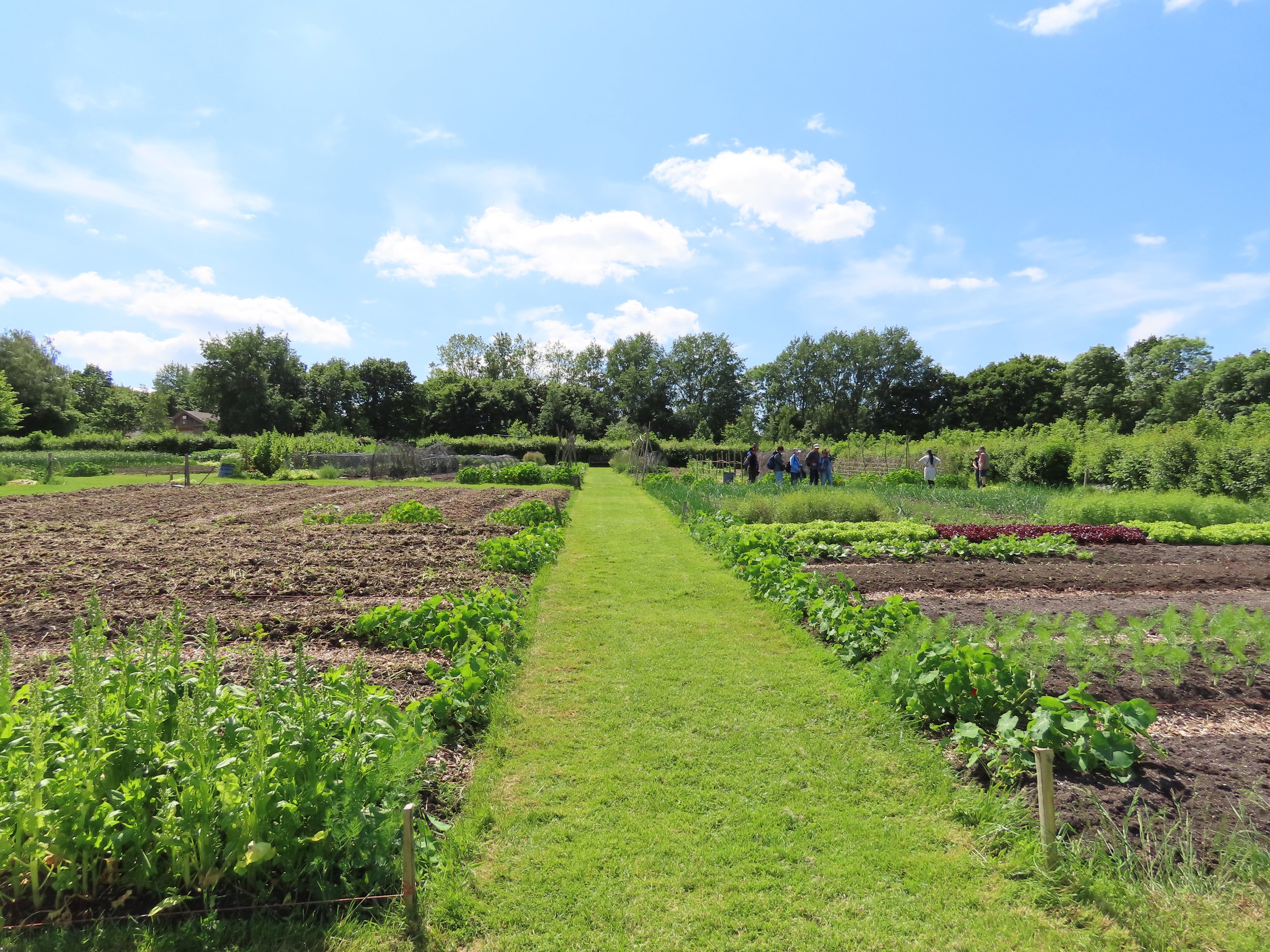

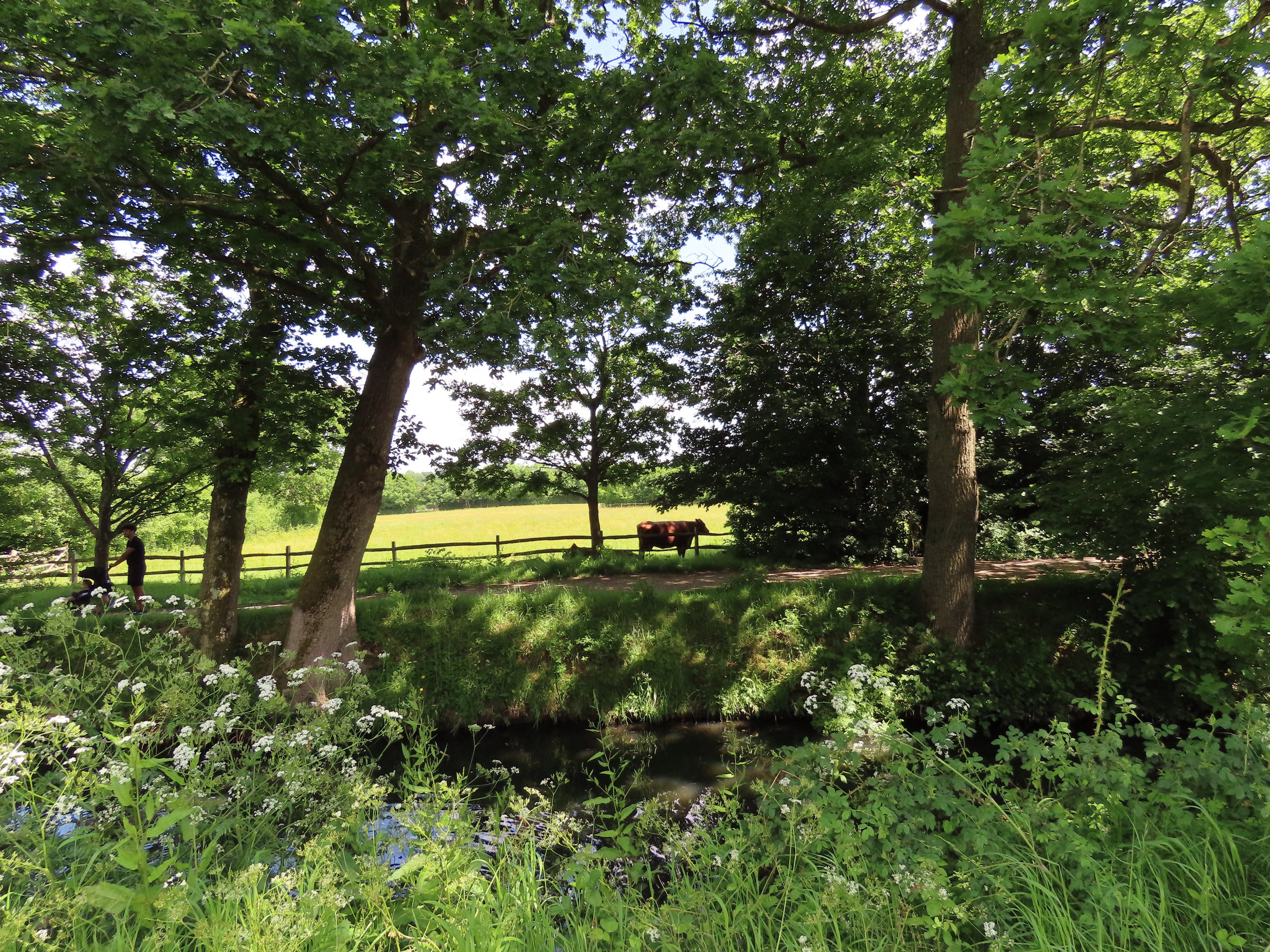
As a young woman, Vita’s deepest wish was to hold onto her ancestral home. However, I was recently struck by how grateful we should be that she was denied this inheritance. This realization came to me while watching Robert Sackville-West give a guided tour of Knole. I could sense the profound responsibility he feels to preserve its history, along with the privacy and freedom his family has sacrificed in their stewardship of this historic home. Living in such a place means assuming the weighty mantle of maintaining it exactly as it has been for centuries.
In Latin, the name Vita means "life," and perfectly captures Sackville-West’s bold and unconventional spirit. Her true calling was not to preserve history but to create it. “I worshipped dead men for their strength,” she once wrote, “forgetting that I was strong.” At Sissinghurst, she found a blank canvas on which to bring her own dreams to life—a freedom Knole could never have offered her. Unbound by convention, she created a place that reflected the complexity and nuance of her inner world. Ultimately, the societal injustices she faced as a woman became a catalyst for one of her greatest creative joys and one of her most enduring gifts to the world: the inspiration to create a legacy of one’s own.
The entrance to Vita’s tower.
For additional reading on Vita, Harold, and the world they created:
From the archive: Vita Sackville-West on her garden at Sissinghurst (1950)
Inside Sissinghurst’s Medeterranean-inspired Delos Garden
A House and Host: Knole with Robert-Sackville West
Portrait of a Marriage: V. Sackville-West and Harold Nicolson
Photography by Natalie Crist, 2024.















